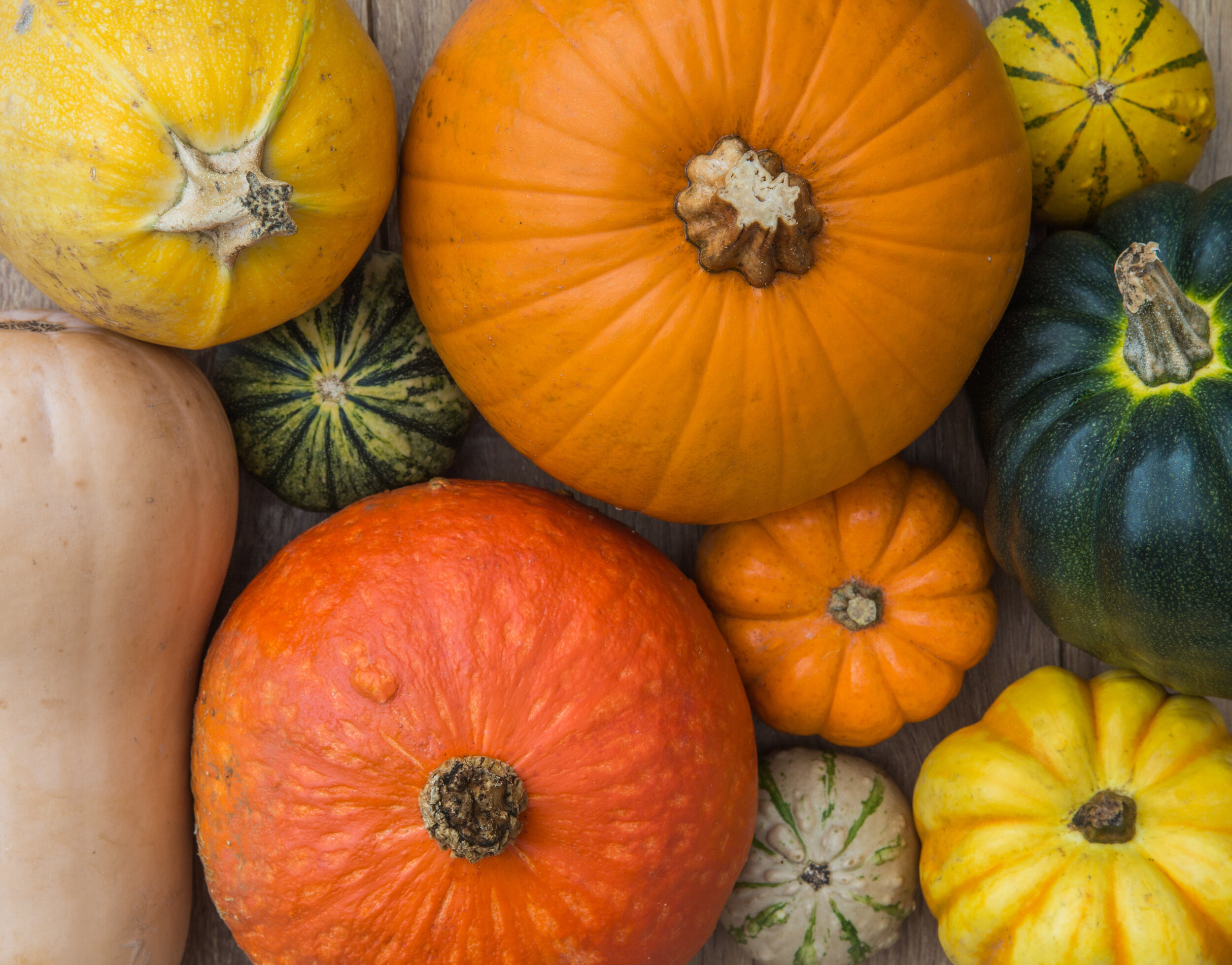Get to Know Cucurbita Maxima
Better known as the winter squashes— Hubbard, Buttercup and Kabocha types.
By Sidonie Maroon , abluedotkitchen
I sent my husband off the Co-op to buy winter squashes, asking him to bring back pie pumpkins and a buttercup. He returned with an orange pie pumpkin and a green skinned beauty that looks like a hat from the Mongolian steppes. They sit in front of me— an Autumn still life.
He mentioned offhand that the Co-op squashes were jumbled together (read artistically arranged) but luckily there was a chart with pictures so he knew what to look for. I’d never considered that someone wouldn’t know this from that squash. I know my basic winter squashes: acorn, spaghetti, butternut, pumpkin, delicata. Beyond those I buy whatever takes my fancy.
The other day, not knowing what it was, he brought home a buttercup squash. I made an Indian curry and enjoyed its chestnut flavor and golden flesh. Afterwards, I looked buttercup up and discovered that different winter squashes come from distinct genuses within the cucurbita family. Butternut is a Cucurbita moschata, while acorn, delicata, pumpkins and spaghetti squash are Cucurbita pepos. Cucurbita maxima— include Hubbard, buttercup and kabocha types.
Maxima originated in South America between 4,000 and 8,000 years ago, probably from Argentina or Uruguay. They didn’t spread to North America until the 16th century where they were first used by native peoples.
The kabocha types were brought to Japan by Portuguese sailors. They have an exceptionally sweet flavor, even sweeter than butternut. Their texture is between a pumpkin and a sweet potato.
Buttercup with dense yellow-orange flesh is reminiscent of the white sweet potato in flavor. It’s popular in Brazil, Columbia and Africa.
Hubbard squash is huge, sometimes between 15 and 40 pounds! Usually it’s sold in pieces and has a smooth texture with sweet and nutty tasting flesh.
By the way— all those giant pumpkins you see around Halloween, well they aren’t pumpkins, but varieties from the Maxima genus. Maxima, get it? Cinderella pumpkins aren’t pumpkins either. I’m not sure how that affects the fairytale?
From the kitchen
I like Cucurbita maxima— they have dense rich flesh with good flavor and aren’t watery or stringy.
They make excellent pies, custards, puree and breads.
Fabulous as a soup squash
Wonderful as curries.
You can roast, steam or pressure cook them.
I put the whole squash in the Instant Pot on high for 15 minutes.
I use the seeds and skin for stock.
The skins are edible.
Dinner Ideas using any type of maxima
1. Roasted slices, maple glazed with oyster mushrooms
2. Tempura squash fritters with sage leaves
3. Roasted with honey, thyme and ginger
4. Make a puree with lime, curry spices and some heat.
5. Steam a custard with cardamom, cinnamon, allspice and ginger
6. Savory pie with rosemary, parmesan and bacon
7. Try a Haitian beef and buttercup stew
8. Thai peanut and squash soup
9. African peanut, squash and coconut soup
10. Indian squash curry
11. Simmered Japanese Kabocha
12. Eat like mashed potatoes with butter and orange zest
Buttercup Squash and Apple Curry
Makes 5 ½ cups
30 minutes
The golden yellow alone makes this dish, but you won’t want to pass up the velvety squash, chunky tart apples, cashews and curry spicing. Serve alone or as a side to naan, poultry or red lentil dal.
Ingredients
¼ cup unsalted butter, or oil of choice
1 large onion, cut into a medium dice
1 tablespoon fresh ginger, finely minced or paste
2 large baking apples, quartered with each quarter cut into 4 chunks
1 cup unsalted raw cashews
2 cups buttercup squash puree
14-ounce can full fat coconut milk, or cream
1 teaspoon sea salt
2 tablespoons brown sugar (I use coconut sugar)
Spices
½ teaspoon ground cinnamon
¼ teaspoon black peppercorns
1 teaspoon freshly ground nutmeg
2 green cardamom pods opened or ¼ teaspoon decorticated cardamom
1 teaspoon turmeric powder
Directions
Instant Pot Whole Squash: Pierce whole squash in several places. Set the squash in a steamer basket and set inside the inner pot. Add 2 cups of water to the bottom of the inner pot. Check the Instant Pot seal and put the lid on. Set to high pressure for 15 minutes with an instant release. Allow the squash to cool. Open it up, scrap the seeds aside and scoop the flesh out and puree. Use all the seeds, guts and skin to make stock in the Instant Pot: Add squash remains with 1 quart of water and any other peelings to the inner pot. Check the Instant Pot seal and put the lid on. Set to the broth cycle with a natural release.
In a large saute pan, using a medium-high heat, melt the butter and add the onions and ginger. Saute them for 10 minutes.
Add the apples and saute for another 5 minutes. Add the cashews and continue to saute for another 5 minutes. The apples should be bite tender but not falling apart. The cashews will soften.
While the onions and apples are sauteing: using a coffee or spice grinder, measure the spices and grind into a powder.
Add the salt and sugar to the saute with the spices.
Mix the squash puree and coconut milk together. Add to the saute and gently fold in.
Serve hot.




